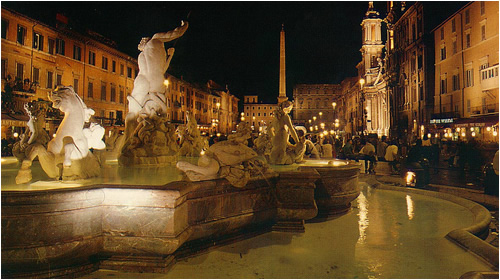| |

 |
|
The United
Kingdom, France, and the Dutch Republic flourished
greatly under the income of their colonies.
The colonists' demand for luxury products from Europe
grew, while American products were
exported to Europe. Trade from and to the Far East was set
up, with Chinese and Indian products becoming widely spread
among the European higher social classes.
After the Ottomons had taken
Constantinople in 1453, the sultans of the Osman House were able to hold
their empire together for five centuries to come,
establishing the Ottoman Empire as a major player in European politics. During the 16th century, the
empire was at its peak, covering most of the Near East and the Balcan. The
other two major European powers of the 16th century were Austria of the
Habsburg House, and France under the Bourbons.
In 1648, the Eighty Year War ended
with the founding of the Republic of the Seven United Provinces, as Holland
had fought itself free from Spanish rule. In a time
when all European nations were ruled by souvereigns,
the republic was a remarkable exception. Because of
its prosperity in the 16th century, this era became
known as the Golden Century to the Dutch.
In 1661, King Lous XIV of France
became the absolute ruler of France. His quote "L'état, c'est moi"
(the state, is me) would become famous. Louis XIV saw himself as the centre of France and the
world, and would therefore be known as the Sun King. France
under the Sun King was the centre of Baroque art, music, and architecture.

Baroque
architecture: As the Roman Church's political and economical power faded,
the influence of the national states increased, that of France under King
Louis XIV in particular, whereas countries in northern Europe turned to
Protestantism. To promote its prestige, the papacy developed spectacular
initiatives which would give the city of Rome a totally new appearance, and
would also make it an example for other large cities in Europe.
Between 1585
and 1590, Pope Sixtus V had a complete new road network constructed, to link
all the important basilicas, with fountains and obelisks at strategic
locations to guide the pilgrims who visited Rome. Baroque architects
continued to build up to this, and their artistic talents are still today
widespread throughout the city. An example of this is the Piazza Navona,
where a splendid spectacle of fountains, palaces and churches offers a
spectacular view from any angle.
The Piazza
Navona square was completely rebuilt in 1650, though its original shape was
preserved, as it used to be a circus under Emperor Domitianus. The square
features three fountains, two on each side and the Fontana dei Fiumi (fountain
of the four flows) in the centre.
The
Sant'Agnese of Borromini is the dominant church on the square. The frontage
of the church building has dynamic, fluent lines and is completely covered
with travertine. In the façade, there are reliefs and niches which provide a
spectacle of light and shade. Two elegant campaniles flank the cupola which
rests on an enormous drummer with pillars underneath them. Large windows are
found between the pillars.

Rococo Palaces:
In Europe's most influential
nations of the 17th and 18th century, sovereignty was equal to the will of
the king. In that period, the European variant to the Chinese Forbidden City
arose, namely the royal palace as the centre of power, from where the
absolute monarch ruled over his country. In France, the Palace of Versailles
- which took almost a hundred years to build - was a good example of a with
pomp and splendour overloaded centre of power. It was different from the
Italian city-states, the small German kingdoms of the aristocratic counties
in Britain. What initially had been a country retreat became, by the hand of
King Louis XIV, the capital of the kingdom. The Palace of Versailles, a
typical example of French architecture of that era, stood as a model for
royal palaces to be build throughout Europe in the 18th century.
In 1682, King
Louis XIV moved the French capital to Versailles, south of Paris. The
surrounding parks, its interior and the nearby village were not yet
completed, and it would take several decades of construction before they
would. The gardens, designed by the famous landscape architect Le Nôtre,
were just as large as the entire city of Paris.
|
|
|
 |
![]()